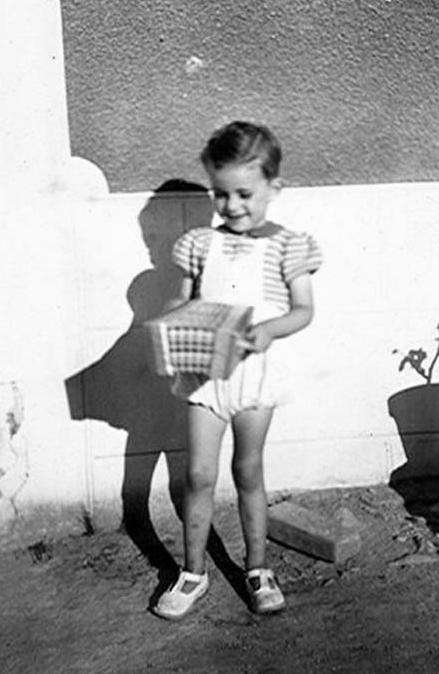 Figure 1.--We note both dressy and play rompers. This boy in 1949 is wearing a bib-front play romper. He looks about 5 years old. |

|
The classic French romper style was especially popular in the 1940s and early 50s.They were worn as an every day play outfit until they began school (maternelle). There were also barboteuse worn for formal and special events. Some of the smocks for special events might have elaborate smocking (enbroidered) work on the front. Thus many different materials were used, including more expensive materials associated with formal or dressy clothes. These dressy rompers for formal or special events, a French contributor says "beautifull circumstances" became very poular about 1938. The dressy versions often had romper bottoms or pants that especially bloomered or puffed. A French reader writes, "After World War II children were especially cherished. French styles for younger boys became rather fancy, even frilly. Popular detailing gor rompers included smocking, emboieteries, big bows in back, very short pants, and expanded puffing. Given the age of the childre, most had no real opinion about their clothes. Some mothers even added curls to the hair of pre-school children. This was done by putting the boy to bed with a few rollers in his hair. Throught history there were times when equal or even great attention was given to dressing boys than girls. It is a culture question. If everybody is saying to a boy "How beautiful you are", the child regards this as quite normal which in fact it was at the time." We note a younger boy wearing a dressy romper in 1949.
The classic French romper style was especially popular in the 1940s and early 50s. I'm not sure about the World War II period when France was occupied by yje Germans. But rompers seem very popular after thee War.
They were worn as an every day play outfit until they began school (maternelle). There were also barboteuse worn for formal and special events. These dressy rompers for formal or special events, a French contributor says "beautifull circumstances" became very poular about 1938. The dressy versions often had romper bottoms or pants that especially bloomered or puffed. A French reader writes, "After World War II children were especially cherished. French styles for younger boys became rather fancy, even frilly. We note a younger boy wearing a dressy romper in 1949.
Some of the rompers and smocks for special events might have elaborate smocking (enbroidered) work on the front. Popular detailing gor rompers included smocking, emboieteries, big bows in back, very short pants, and expanded puffing.
Many different materials were used, including more expensive materials associated with formal or dressy clothes.
Given the age of most of the children wearing rompers, the children, mostly had no real opinion about their clothes. We think that mostly it was a style for boys about 2-5 years of age. Rompers might be worn by younger school-age children in the 1940s, but not to school. Children as old as 7 years might wear rompers for special occassions. References to children this old come from fashion magazine patterns. The photographic record suggests that rompers were not commonly worn by school age boys. Most of the children were, however, yonger, generally up to about 5 years of age.
Most French boys wearing rompers in the 1940s had short hair cuts. We see the boys with various cuts, but mostly short styles. Some of the younger boys may not yet have had their hair cut, but mosts did based on the photographic record. Some especially fashion concsious mothers added curls to the hair of their pre-school children. Here the most common fashion was a basically a short hair cut with a big curl on the top. This was called a choupette. This was done by putting the boy to bed with a few rollers in his hair. This was a style for pre-school boys, the same age group that wore rompers.
Throught history there were times when equal or even great attention was given to dressing boys than girls. Generally more attention was given to girls clothing, but there were exceptions. It is a culture question. If everybody is saying to a boy "How beautiful you are", the child regards this as quite normal which in fact it was at the time."
Navigate the Historic Boys' Clothing Web Site:
[Return to the Main French romper chronology classic period page]
[Return to the Main French garment page]
[Introduction][Activities][Bibliographies][Biographies][Chronologies][Countries][Post cards][Style Index]
[Contributions][Frequently Asked Questions][French Glossary][Images][Links][Registration]
[Main HBC page]
Navigate the Historic Boys' Clothing Web chronological pages:
[The 1890s][The 1900s][The 1910s][The 1920s][The 1930s][The 1940s][The 1950s]
Navigate the Historic Boys' Clothing Web style pages:
[Sailor hats][Dresses][Smocks][Bodice kilts][Kilts][Sailor suits]
[Rompers][Ring bearer/page costumes][Shortalls]
